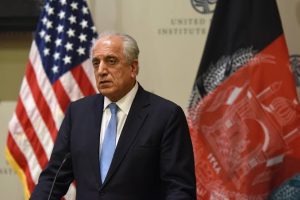
 KABUL: (MEP) Policies applied by the central bank to control liquidity, are called monetary policy.
KABUL: (MEP) Policies applied by the central bank to control liquidity, are called monetary policy.
The central bank tries by applying these policies, on the pattern of household consumption and production companies and ultimately affect inflation. The only monetary policy that “De Afghanistan Bank” (the central bank), and the most used, has been sales of currency in market which was successful in some cases but in many other cases was unsuccessful.
This applies, unfortunately, to the extent of the central bank that in the discount rate of dollars and other foreign currencies also considers sales of currency and in exchange, Afghan money is collected from the market.
According to a number of economic and monetary theories, based on the theory of purchasing power parity, the exchange rate is a function of the ratio of price index of inflation inside to the outside or the inside to outside. Therefore, a positive difference in the rate of inflation inside to outside, should reduce the value of the domestic currency and increase the value of foreign currency.
The floating exchange rate regime without government intervention, supply and demand of money in the currency markets, measures the relations between the two money; but in the floating exchange rate regime with intervention which is called dirty float, government intervene in the foreign exchange market due to economic considerations.
For example, the value of the domestic currency despite higher domestic inflation rate which should be reduced from the outside, keeps constant. The value of the domestic currency causes too much because of the irreducible value of the domestic currency, the imports get low-priced and exports get expensive. The government intervention in the currency market this way, reduces the competitiveness of exporters and the exports and due to the lack of rising cost of imports, demand for imports increases.
Floating the national currency rate stimulates the economy and imports get more expensive and exports would booming; unfortunately, in our country this potency does not exist and the Central Bank (De Afghanistan Bank) as the country’s monetary policy, every so often is pleased from only Sales of Currency and to reduce or increase the value of the national currency, perform this action.
Thus, pure exports is the difference between exports and imports, decreased and reduces the national income.
According to economic expert opinions, sales of currency through central bank is also a policy of floating with intervention which is pursuing. In recent months, government intervention in the currency market caused excessive vibration and Afghan currency against other currencies is artificial.
Meanwhile, smuggling and import competing goods, caused the bankruptcy of many manufacturers and the closure of many production units.
Now, many manufacturers because of the lack of competition with imports, have abandoned their production and importing the same products and sometimes with the same name of the manufacturer as well as importing their goods as raw materials or intermediate goods and just pack it up and sent it through to markets.
The importers of the producers have maintained their characteristics; because of its advantages benefit, but in practice, do not have actual production and job creation.
Afghan rate against dollar which had been set as 50 Afghanis in the past, a financial trader was importing 100 thousand dollars to five million Afghans; but if the Afghan stabilized rate goes higher; the trader imports his wealth to the lower rate and this will increase demand that encourages traders to import.
In contrast to exports, if a businessman has issued a kilo of raisins worth a dollar, then in exporting of a 100 thousand dollars raisins outside, five million Afghans would take; but if the Afghan rate is much lower; the trader’s profit also goes lower which reduces exports and converts the exporters to importers.
This comes as the government should focus more on exports for the growth rates, reduce of unemployment and increase national income and with foreign and trade policies, increase competitiveness of exporters in foreign markets and by setting standards and laboratories and encouraging investment in packaging for export products, increase the share of exports.
Managed by the current exchange rate, exports were no longer affordable and exporter and manufacturers of export goods would turn into importer and this will be considered a major threat to the country’s economy.
This is despites the fact that today January 23, 2016, the central bank once again uses from the exchange police of sales currency in the country’s markets and on the based on that, sales $15 USD and 220 million Pakistani Rupees.
This comes as until today’s evening, the price of $1 is equal to 68, 60 AFG and one thousand Pakistani rupees is equal to 636 AFG are exchanged.
In the end, it is worth mentioning that the country’s economic policy makers should think to change their policies in order to develop economic infrastructure so they would not face further problems in the future.




